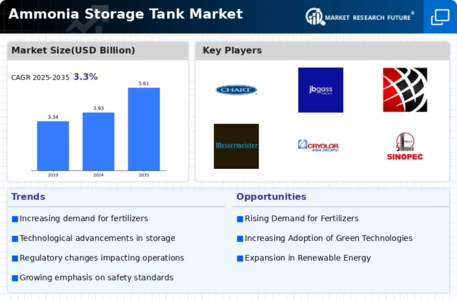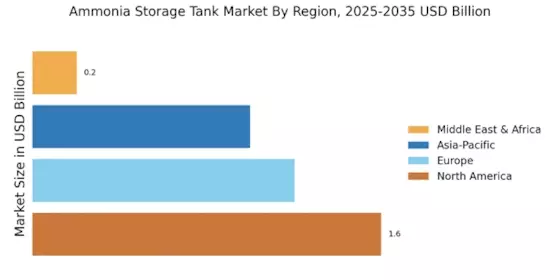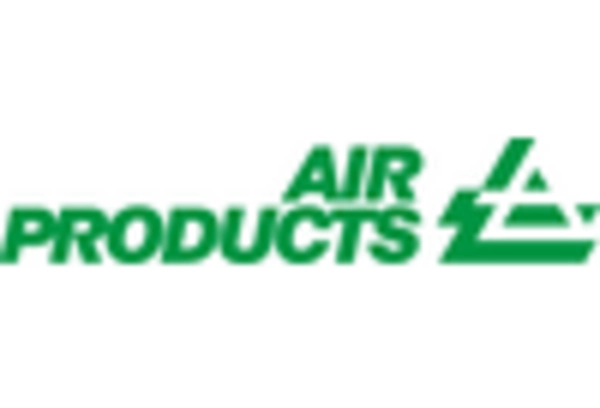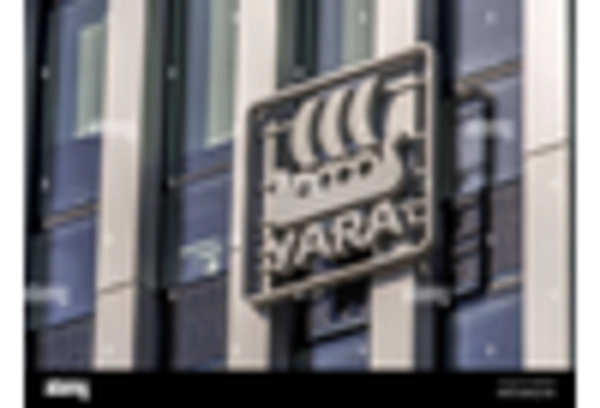Rising Demand for Fertilizers
The increasing global population and the corresponding rise in food demand are driving the need for fertilizers, which in turn fuels the Ammonia Storage Tank Market. Ammonia is a key ingredient in nitrogen-based fertilizers, and as agricultural practices evolve, the demand for efficient storage solutions becomes paramount. In recent years, the fertilizer market has shown a compound annual growth rate (CAGR) of approximately 3.5%, indicating a robust growth trajectory. This trend suggests that the ammonia storage tank sector must adapt to accommodate larger volumes and more efficient storage methods to meet the agricultural sector's needs.
Growth in Renewable Energy Sector
The Ammonia Storage Tank Market is poised for growth due to the increasing interest in renewable energy sources. Ammonia is being explored as a potential hydrogen carrier and energy storage medium, particularly in the context of green hydrogen production. As countries invest in renewable energy infrastructure, the need for ammonia storage solutions is likely to rise. Recent studies indicate that ammonia could play a crucial role in achieving energy transition goals, further stimulating the demand for ammonia storage tanks. This trend suggests a promising future for the ammonia storage market as it aligns with global energy sustainability efforts.
Industrial Applications Expansion
The Ammonia Storage Tank Market is experiencing growth due to the expansion of industrial applications. Ammonia is utilized in various sectors, including chemical manufacturing, refrigeration, and energy production. The chemical industry, in particular, has seen a surge in ammonia usage, with production levels reaching over 200 million metric tons annually. This increase necessitates the development of advanced storage solutions to ensure safety and efficiency. As industries continue to innovate and expand, the demand for ammonia storage tanks is likely to rise, presenting opportunities for manufacturers to enhance their offerings.
Environmental Regulations and Safety Standards
The Ammonia Storage Tank Market is significantly influenced by stringent environmental regulations and safety standards. Governments worldwide are implementing policies aimed at reducing emissions and ensuring safe handling of hazardous materials. Compliance with these regulations often requires the installation of modern storage tanks that meet safety and environmental criteria. For instance, the implementation of the European Union's REACH regulation has prompted companies to invest in safer storage solutions. This trend indicates a growing market for ammonia storage tanks that not only comply with regulations but also promote sustainability.
Technological Innovations in Storage Solutions
Technological advancements are reshaping the Ammonia Storage Tank Market, leading to the development of more efficient and safer storage solutions. Innovations such as advanced monitoring systems, automated controls, and improved materials are enhancing the performance of ammonia storage tanks. For example, the introduction of smart tank technologies allows for real-time monitoring of ammonia levels and leak detection, thereby increasing safety and operational efficiency. As industries seek to optimize their storage capabilities, the demand for technologically advanced ammonia storage solutions is expected to grow, driving market expansion.


















Leave a Comment